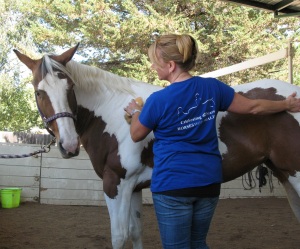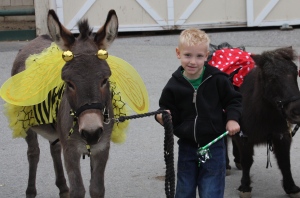At some point in their life every horseperson has come across a friend, acquaintance or family member who’s shocked to hear that after decades of riding you’re still taking lessons. “You’ve had a horse for fifteen years and you still haven’t learned to ride it yet?”
Simply put, riding is hard. Not only are we working to maintain our balance on a moving surface, but we’re attempting to synchronize multiple body systems: hands, legs, voice, seat. Before you so much as mount a horse you’re challenged to remember a host of instructions. Leading a horse to the mounting block sounds simple enough, but remember to look where you’re going, hold the leadrope below the snap with your right hand, keep the excess rope in your left hand, walk at the horse’s side between their head and shoulder, don’t get too close to their hooves, and keep your head up, shoulders back, chest open, well, you get the idea.
 As able-bodied individuals, we sometimes take for granted the ease with which we complete everyday physical and mental tasks. As you follow the progress of our veteran’s program, put yourself in their shoes. Think about how difficult it is to walk through deep sand at the beach, and imagine that’s how it feels for some of the men and women to walk in our arena. Try to instantly memorize a new telephone number, do you have to repeat it to yourself many times before it sticks? Now, imagine trying to memorize that number while talking with a friend. That may be what it’s like for participants with PTSD or TBIs to try and remember the order of grooming tools or a riding pattern during lessons.
As able-bodied individuals, we sometimes take for granted the ease with which we complete everyday physical and mental tasks. As you follow the progress of our veteran’s program, put yourself in their shoes. Think about how difficult it is to walk through deep sand at the beach, and imagine that’s how it feels for some of the men and women to walk in our arena. Try to instantly memorize a new telephone number, do you have to repeat it to yourself many times before it sticks? Now, imagine trying to memorize that number while talking with a friend. That may be what it’s like for participants with PTSD or TBIs to try and remember the order of grooming tools or a riding pattern during lessons.
The programs offered at NCEFT are far from pony rides. They’re hard work conveniently disguised by hooves and hair.





